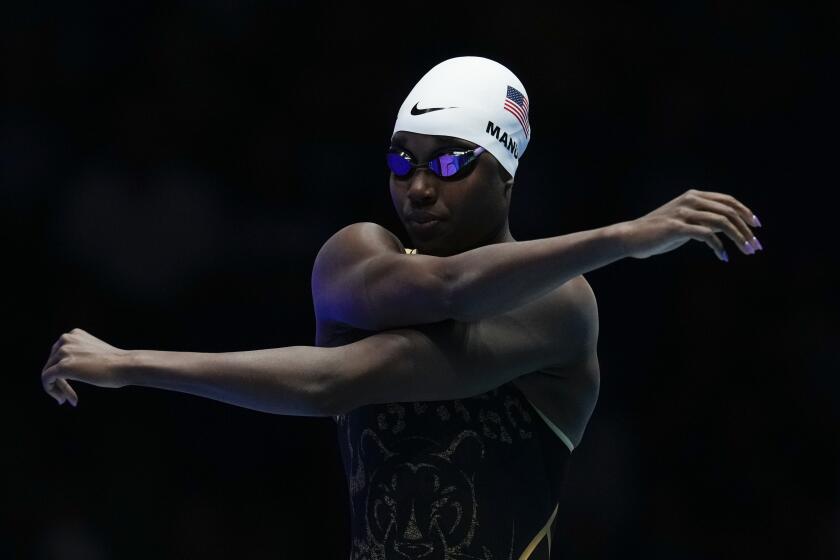Wayne Garland Recalls His Historic Contract
Wayne Garland can recite the conversation word for word, even 11 years later.
His agent, Jerry Kapstein, had called with news of a deal with the Cleveland Indians. All he needed was a signature.
“He said, ‘Wayne, I didn’t get you a million dollars,”’ Garland recalled recently. “I said, ‘Jerry, I’m sure you did the best you could.’ He said, ‘You got a 10-year contract for over $2 million.’ I said, ‘Jerry, I’m not worth it.’ He said, ‘Well, obviously someone thinks you are.”’
Someone did. The Indians had finished fourth in 1976 and, wanting to improve their pitching, offered Garland $2.3 million over 10 years. He didn’t know it then, but that deal would hurl him into baseball history.
His case symbolizes a debate that may produce a strike in 1990: how much money is too much, and at what risk to the club? Garland took a 20-7 record with the 1976 Baltimore Orioles onto the open market, showing what the right pitcher could earn from the right employer. A torn rotator cuff, however, made him an example of how investments can go wrong.
“When I stepped over the white line I gave 100 per cent every time,” Garland said. “I’d much rather be known for that, because the contract is over with and I’m still here.”
Garland, 37, of Nashville, Tenn., is back in baseball as a pitching coach for Nashville of the American Association. Leaning on a bullpen fence at the Cincinnati Reds’ training base, he escaped the notice of fans more keen on the likes of Eric Davis, Pete Rose and Mario Soto.
Nevertheless, fans who remember the early days of free agency know Garland well. In 1976, the Players’ Association had triumphed in a legal battle, giving players the right to test the open market after playing an “option year.”
Garland, a 6-foot, 195-pound right-hander who was 25 at the time, played the 1976 season for Baltimore without a contract. If he had suffered a severe injury, he would have been worth nothing on the market. Instead, he remained healthy and went 20-7 with 2.68 ERA.
“I took a gamble,” he said. “It was the biggest risk I ever took. God forbid if I hurt my arm.”
Some of his teammates took the same risk. Reggie Jackson wound up playing in New York. Bobby Grich went to the California Angels. They all prospered in a market in which clubs were eager to spend.
Garland says he and Kapstein discussed the possibility of a five-year deal worth a million. Then came Cleveland’s offer. He called his mom and broke the news to her, just as Kapstein had broken it to him.
“I said, ‘I didn’t get my million.’ She said, ‘Money’s not everything.’ I said, ‘I got two million.’ She said, ‘You’re not worth it.’
“I carried that for a long time,” Garland said. “I remembered what Jerry Kapstein said. ‘If somebody thought you were (worth it), you were.”’
He wasn’t, but not for lack of trying. Garland went 13-19 with a 3.59 ERA for the 1977 Indians, who fell to fifth place. Manager Frank Robinson was fired, and they have never reached fourth place again.
It wasn’t just one bad season, either. At some point, Garland’s arm began to hurt. Suddenly, the investment was lost.
“I wish I could pinpoint it,” Garland said. “Like the doctor told me, you only have so many pitches left in your arm. It started in spring training. It bothered me on and off. There were a couple of times I went out and tried to prove that Wayne Garland was worth the money.
“Over the winter I rested it. I got to spring training, it was fine. I hurt it in the first exhibition game. I tried to throw too hard too soon. It never got better.”
The virtual end came one day in a game against Oakland. Garland was pitching and it was obvious he had nothing. He called pitching coach Dave Duncan from the dugout and admitted the pain.
“We know something is wrong,” Duncan said.
An examination with Dr. Frank Jobe revealed a torn rotator cuff. Today, doctors know more about how to prevent and cure that injury. But not then. It was a career-ender.
Garland was released in January of 1982. He tried a comeback with Nashville, working on his knuckler with Hoyt Wilhelm. Garland says he saw himself in the same position he’d been in 10 years earlier: trying to fight his way to the big leagues.
“I said, ‘You’ve had your career. It’s time to get out.”’
Garland left the majors with a 55-66 lifetime record, and a 3.89 ERA. Since then, he has worked in Milwaukee’s farm system, as head coach at Aquinas Junior College in Nashville, and now with the Reds’ organization. He says he would like to work in the majors.
“Of course I would,” he said. “It was a dream as a child. It carries on.”
Nowadays, $2.3 million for 10 years doesn’t sound like much. Some players make nearly that much for one season.
“I was a bargain compared to what salaries are today,” he said. “I can honestly say it’s going to have to stop somewhere.”
But it hasn’t yet, and Garland owns a niche as a $2.3 million man. The question is whether it’s a price he received, or one he had to pay.
More to Read
Go beyond the scoreboard
Get the latest on L.A.'s teams in the daily Sports Report newsletter.
You may occasionally receive promotional content from the Los Angeles Times.






